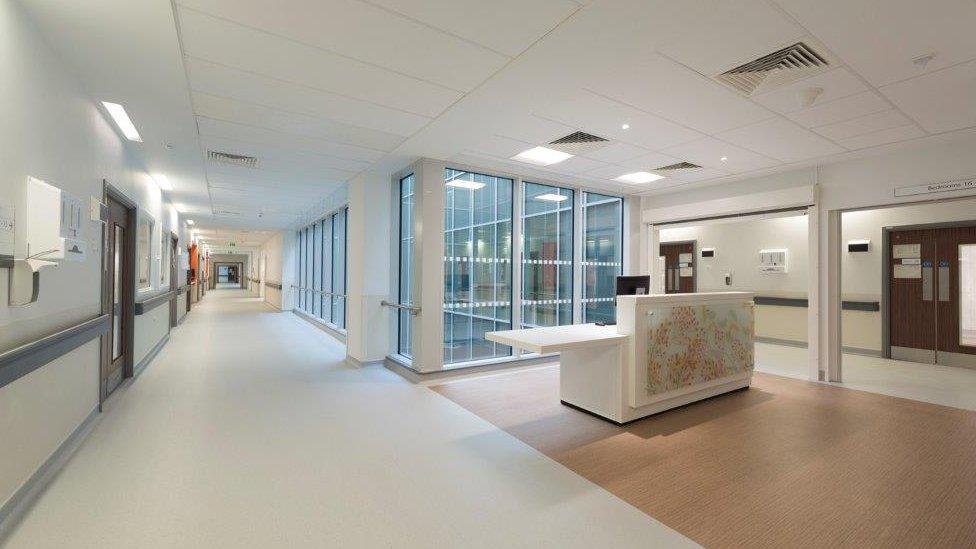Report's concerns over two patients in Dumfries hospital's single rooms
- Published

Rooms designed to house one patient at Dumfries and Galloway Royal Infirmary are routinely used to accommodate two people, a new report has found.
Inspectors raised concerns about risk assessments and privacy for patients sharing single-occupancy rooms.
They said the hospital was operating at more than 100% occupancy during their unannounced visit on 20-22 March.
But despite being busy, most areas were calm and interactions between patients, staff and relatives were positive.
The Healthcare Improvement Scotland report, external praised senior managers and staff teamwork in delivering care.
NHS Dumfries and Galloway said the report was "generally positive" and it welcomed its suggestions on how "performance can continue to improve".
The 344-bed Dumfries hospital, which cost £212m and opened in 2017, is made up entirely of single rooms.
NHS bosses said at the time that they would reduce cross-infection and protect patients' dignity and privacy, but critics warned long-term patients could become isolated.
Inspectors said that when single occupancy rooms were used by two patients, some did not have privacy screens available.
"In one ward where there was no screen available, we observed a patient being moved temporarily into the corridor by staff to allow the other patient privacy," the report said.

The 344 beds in the facility are all in single rooms
Senior managers later told the inspectors that additional screens were being ordered.
Inspectors also raised concerns about the risk assessment carried out on patients in line to share a single occupancy room.
They found several different versions of the risk assessment, all with different criteria for the patients who could be considered.
The patients they spoke to agreed to being in a shared single-occupancy room but the risk assessment did not include a question on consent.
'Good teamwork'
However, they also found that the additional beds "did not appear to have a negative impact on patient safety".
"For example, incidents reported did not highlight any obvious increase in patient falls for patients residing within these beds," they added.
Of seven requirements made by inspectors, two related to the additional patients in single-occupancy rooms. They also made one recommendation and highlighted five areas of good practice.
Donna Maclean, chief inspector of Healthcare Improvement Scotland, said that the time of the inspection the hospital - like much of NHS Scotland - had been experiencing "a significant range of pressures".
These included increased admissions and reduced staff availability.
"However, despite the hospital being busy, the majority of areas were calm and well organised and we observed positive, respectful interactions between staff, patients and relatives with good teamwork to support the safe delivery of care," she said.
"Senior managers displayed good oversight and understanding of their clinical areas."
'Very robust'
A spokesman for NHS Dumfries and Galloway said that accommodating two people in single-occupancy rooms was "routinely employed locally and nationally".
He said they were identified as having sufficient capacity for more than one patient while planning for increased numbers.
"A very robust and well developed surge plan had been developed, and the report recognises these policy documents and that all rooms have been operating in line with these plans - including access to alarms, oxygen and electrical points and en suite facilities," he added.
"We do recognise that privacy has been an occasional issue, and one that we have worked to address along with ensuring that all patients in these circumstances absolutely meet the required criteria."